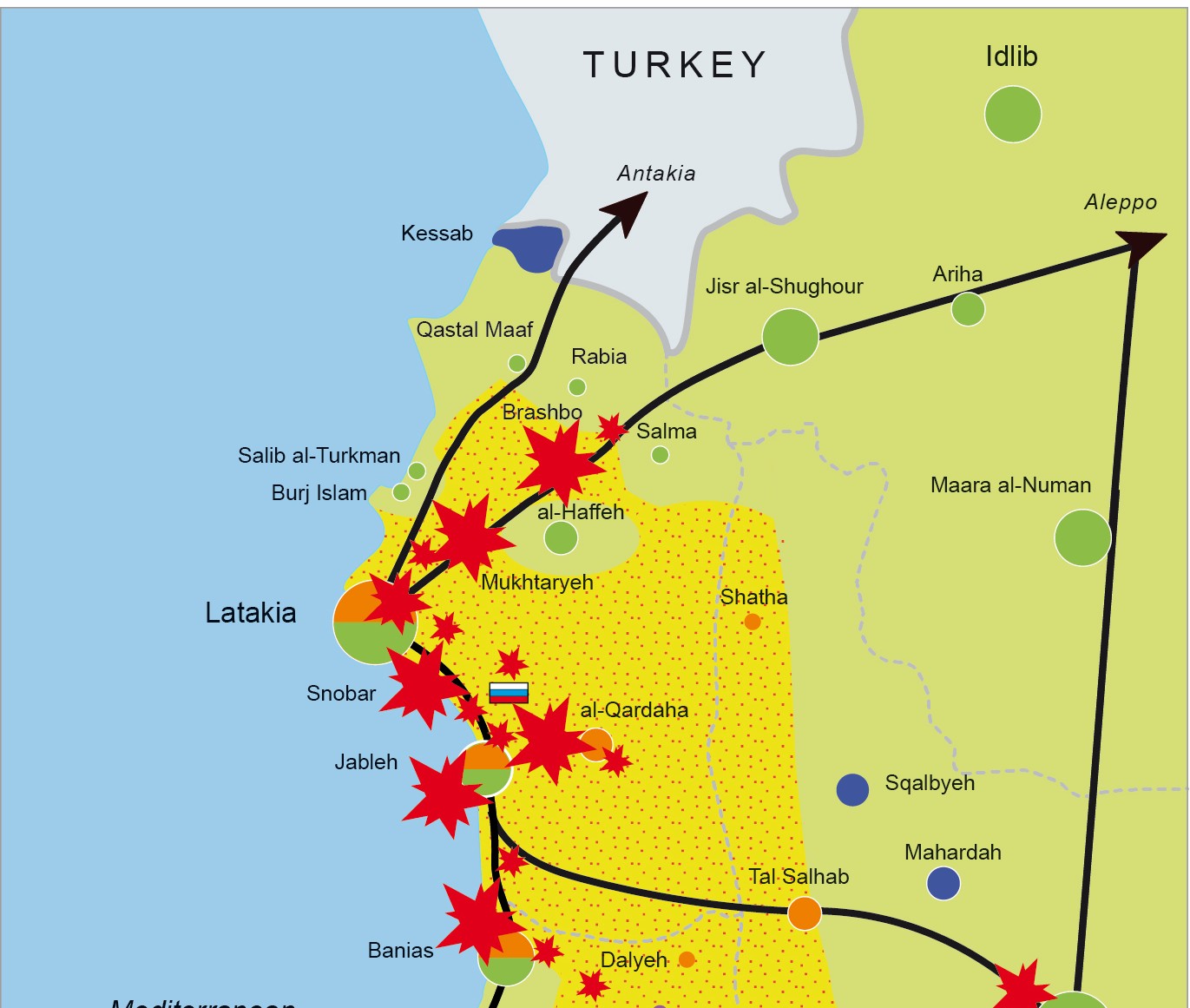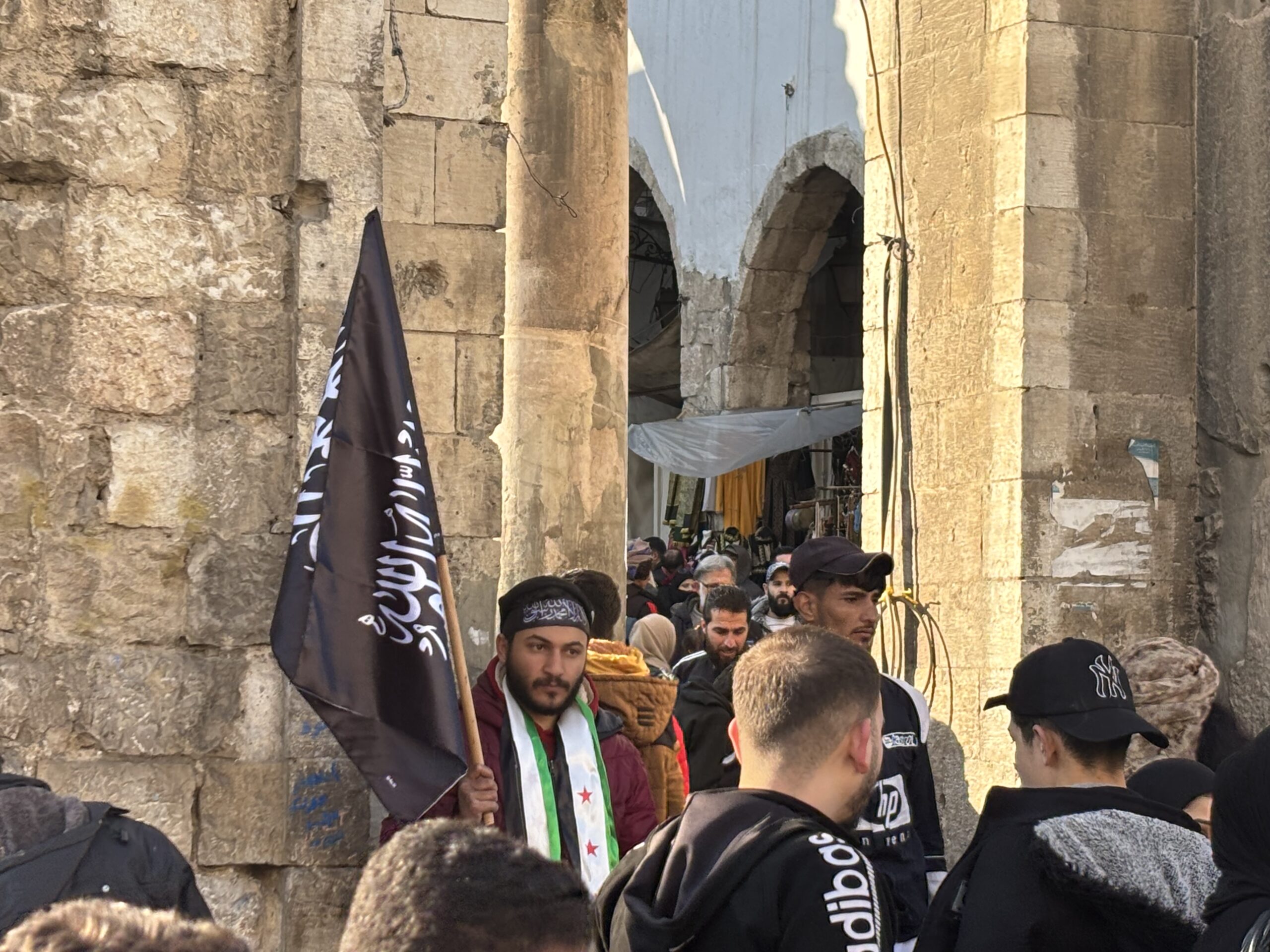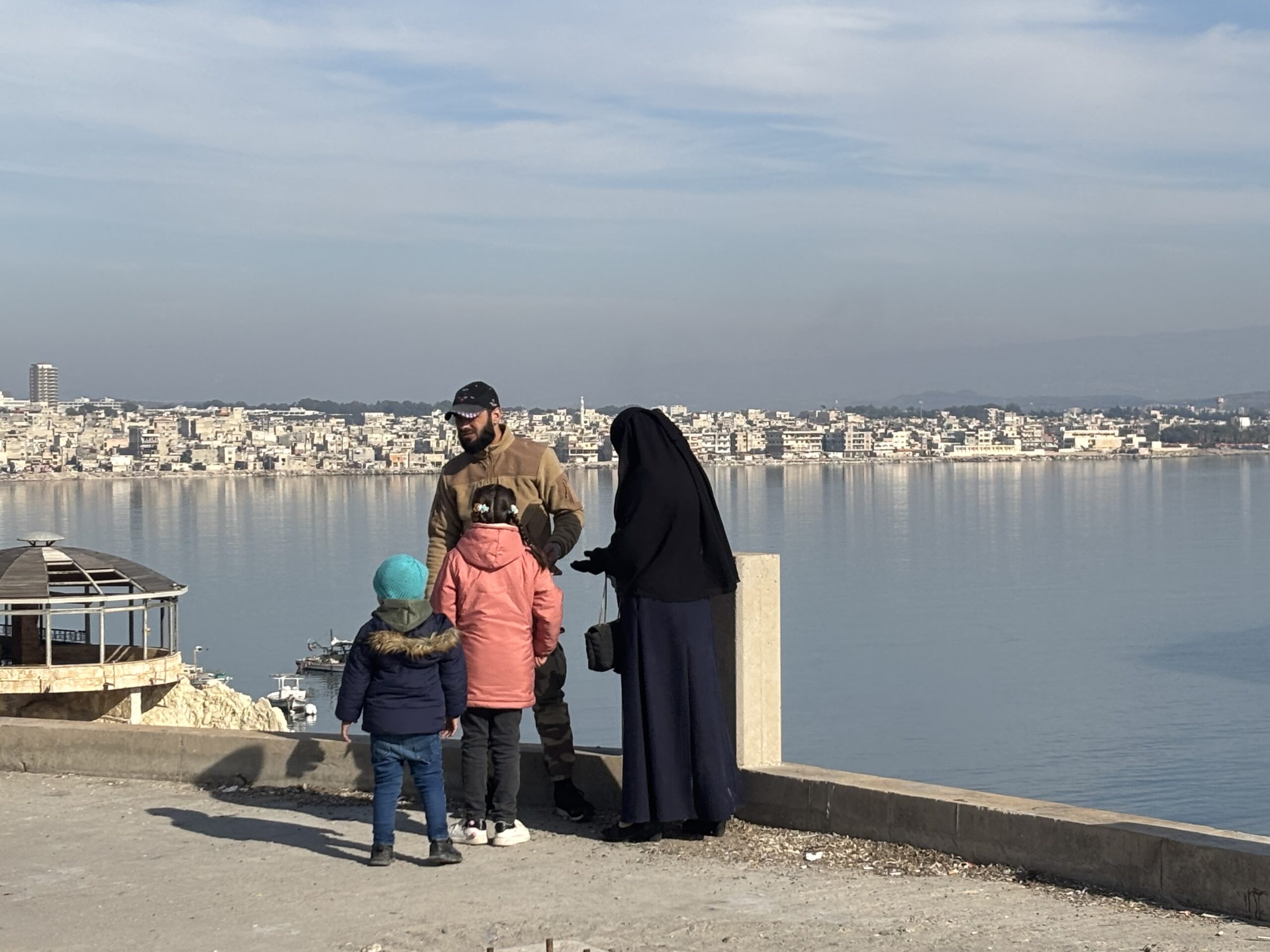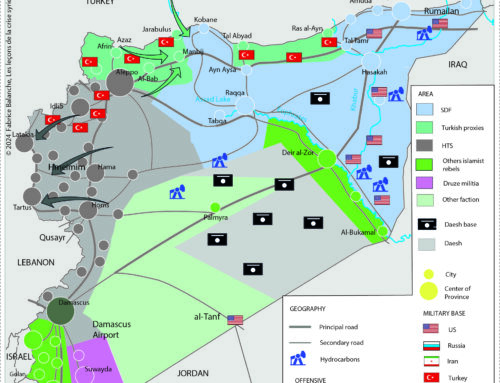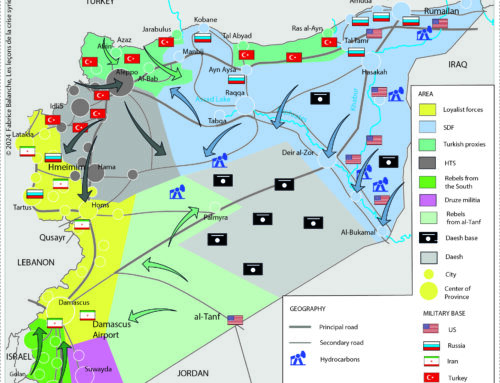The early-March 2025 massacres against the Alawites caused the deaths of thousands of people. Analyzing these events helps to understand the motivations of their perpetrators and the sequence of operations.
Published in French in Revue Conflits, March 25, 2025.
It is unlikely that an accurate death toll can be determined for the Alawite massacres on the coast in March 2025. Two weeks after this harrowing incident, the only data available comes from the SOHR, which reported a total of 1,376 civilian casualties between March 6th and 9th. It’s crucial to remember that the violence began on March 4th in the Alawite district of Daatour, with Ahmad al-Sharaa responsible for the massacre of Alawites. The clashes persisted past March 9th, albeit at a reduced level. Unofficial accounts suggest around 5,000 fatalities, making the SOHR’s tally of 1,376 casualties a conservative estimate. Our colleague Pierre Valty created a map of the massacres using SOHR data on Google Maps (available by clicking here). This invaluable resource served as the foundation for the summary map accompanying this article. Please note that this map is not a formal representation of data from the UN or the commission of inquiry established by the new regime in Damascus. Instead, it is an analysis of the circumstances, using SOHR data, with the goal of understanding the causes of the massacre.
The map reveals that the northern part of the coastal plain, between Banias and Latakia, experienced the most casualties. The city of Banias was the site of a tragic massacre, with a staggering 315 deaths, the majority of which were concentrated in the Alawite neighborhood of al-Qusour. Two inland villages, al-Mukhtaryeh and Brashbo, situated near the Aleppo-Latakia highway, also suffered significant losses. The village of Snobar, on the outskirts of Latakia, suffered the highest number of fatalities (154).
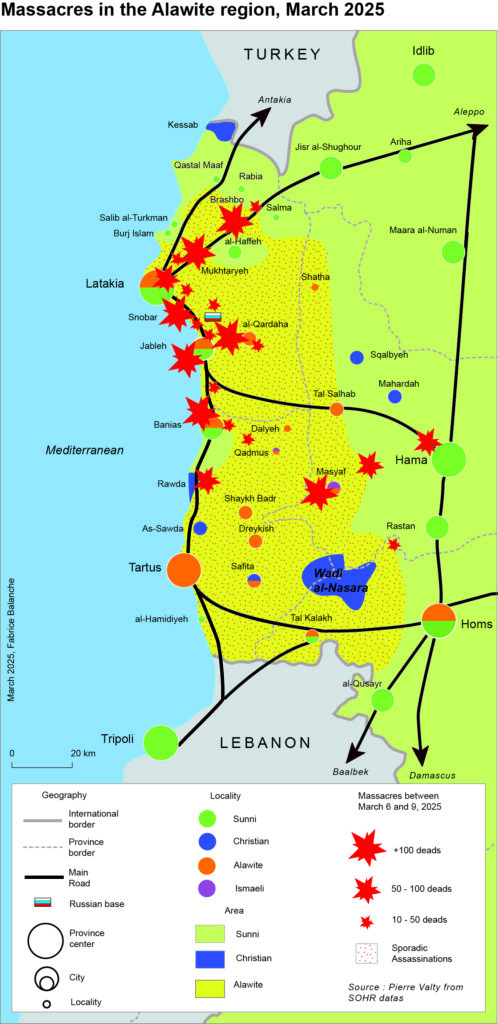
Murderers rampaged near Masyaf, a town that is Alawite, Ismaili, and Christian, killing 88 people in Rassafa. Horrific acts were also perpetrated in the Ghab plains, between Tel Salhab and Shatha. This place is extremely susceptible due to its proximity to Sunni-majority Syria, where state brutality intertwines with locals’ desire for Alawite land. In contrast, there has been less bloodshed in the southern Alawite Mountains, specifically in the districts of Tartus, Safita, Dreykish, and Sheikh Bader. Villages in the Alawite highlands have also been the site of sporadic massacres, but not to the same extent as those on the coast. HTS auxiliaries have been cautious not to engage in the natural terrain, as it still provides protection. A bloodstained path has been left between Banias and Masyaf, straddling this major mountain road.
The fact that most of the massacres occurred on the coast, which is easy to access by car, between Latakia and Banias demonstrates the responsibility of the new Syrian regime’s security forces. The authorities had police stations in Latakia, Banias, and Jableh, and could not ignore the events in their region. The Ghab Plain, between Massyaf, Tel Salhab, and Jesser al-Shoughour, also saw similar violence. The alleged irregular groups were therefore subject to the monitoring of the new regime’s security forces.
The concentration of large-scale massacres in the northern Alawite region could support the new regime’s claim that these events constitute a crackdown on “an insurrection fomented by loyalists of the old regime.” This region was indeed where the old regime mainly recruited its security forces, while the southern Alawite region, farther away from the Assad family, served as a reservoir for civil servants. It is incorrect to believe that the violence erupted on March 6, as claimed by Damascus. The events began on March 4 with the attack on the Alawite neighborhood of Daatour by HTS forces, followed by the assault on the holy village of Dalyeh the next day. What transpired was not an uprising, but a defensive response by the Alawites. Notably, ex-military personnel and intelligence agency members were among the most resolute fighters, refusing to surrender. Their attack was insufficient to capture the coastal area and establish a fortified Alawite enclave.
The new Islamist authorities’ violence was indiscriminate: they killed women, children and the elderly. Young men were the main targets. This wasn’t because they had been part of the previous regime’s army or secret services, but because the Alawite community had to be eliminated. Now, Alawite men know that they can be executed for their religious affiliation, so they have to flee the country to stay alive. The women and children will either accompany them or join them. These massacres are mainly motivated by ethnic cleansing against a community accused of complicity with the Assad regime, as well as religious hatred.


